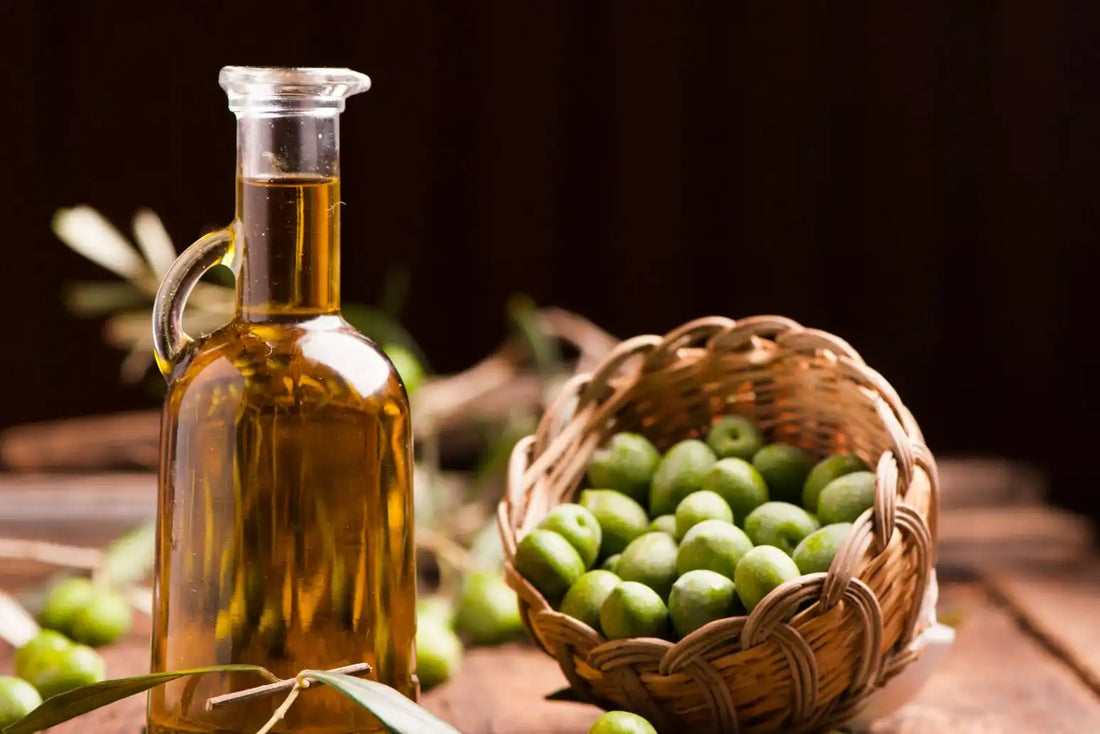
Hydroxytyrosol in one glance
Hydroxytyrosol is one of nature’s most refined antioxidants, prized for its presence in the olive fruit and celebrated across centuries of Mediterranean living. Small in size but remarkably potent, this phenolic compound helps the body manage oxidative stress at the cellular level, particularly in the cardiovascular system. Modern research now echoes what tradition always hinted at: hydroxytyrosol protects what matters most, starting with your heart and your cells' delicate lipid membranes.
The essentials
What it is: A small but powerful antioxidant polyphenol found naturally in olives and olive oil, often standardised in olive fruit extracts.
Where it lives: Found in olive pulp and oil, and formed during the metabolism of olive secoiridoids like oleuropein.
Why it matters: When consumed in defined amounts, hydroxytyrosol and its derivatives support the protection of blood lipids from oxidative stress—a benefit acknowledged in clinical research and codified in EU health claim regulations.*
Results from within
Hydroxytyrosol is efficiently absorbed and rapidly conjugated in the body, primarily as glucuronide and sulphate forms. Once in circulation, it helps neutralise free radicals and modulate markers linked to lipid oxidation. Clinical studies using standardised olive fruit extracts show measurable shifts in antioxidant capacity and LDL oxidation resistance, reinforcing its status as a high-impact, low-dose polyphenol.
Fruit, not leaf
True hydroxytyrosol content varies significantly between sources. While olive leaf may offer some antioxidant potential, it is olive fruit and oil that contain the bioactive compounds aligned with EU-authorised health claims. High-quality extracts ensure standardised delivery, proper molecular profile, and better alignment with human research data.
Three things to look for in a hydroxytyrosol formula
- Defined and qualifying content – Ensure ≥5 mg hydroxytyrosol (including derivatives) per daily serving to meet EU claim thresholds.
- Fruit-derived and traceable – Origin from the olive fruit (not leaf), with transparent extraction and production.
- Clinically consistent – Backed by human research and formulated at doses shown to influence oxidative and lipid-related markers.
Hytolive®, our selected hydroxytyrosol
What it is
Hytolive® is a premium olive fruit extract standardised to ≥10% hydroxytyrosol, developed through a patented, solvent-free process. It delivers a potent dose in just 75–150 mg, ideal for compact, once-daily formulas.
What the research shows
Oxidative stress and lipid markers: A recent randomised, double-blind, placebo-controlled study in adults with elevated cardiometabolic risk used Hytolive® at 150 mg/day (15 mg hydroxytyrosol). Results showed shifts in inflammation and oxidative stress biomarkers.
EU-aligned efficacy: Multiple studies on standardised olive extracts and hydroxytyrosol-enriched oils confirm their contribution to the protection of LDL particles from oxidation when consumed at ≥5 mg/day.*
Why we selected it
Hytolive® stands out for its European origin, clean extraction, and clearly defined hydroxytyrosol profile. Its ability to deliver claim-qualifying levels in a low daily dose, with minimal sensory impact, makes it a precision-fit for high-performance antioxidant formulas.
References
[1] EU Register of Nutrition and Health Claims: Hydroxytyrosol ≥5 mg/day contributes to the protection of blood lipids from oxidative stress.
[2] Hytolive® Technical Sheet & Clinical Summary: 150 mg/day dose delivering 15 mg hydroxytyrosol in human intervention study.
[3] EFSA Journal 2011;9(4):2033 – Scientific opinion on olive oil polyphenols and lipid oxidation protection.
📌 Disclaimer: This article is for informational purposes only and does not offer medical advice or make health claims. It outlines ingredient characteristics based on publicly available research. Individual responses may vary. For personal health decisions, please consult a qualified healthcare professional.
* EU-authorised claims can be used only when a product delivers the qualifying dose (≥5 mg hydroxytyrosol and derivatives/day) and meets all regulatory labelling conditions.